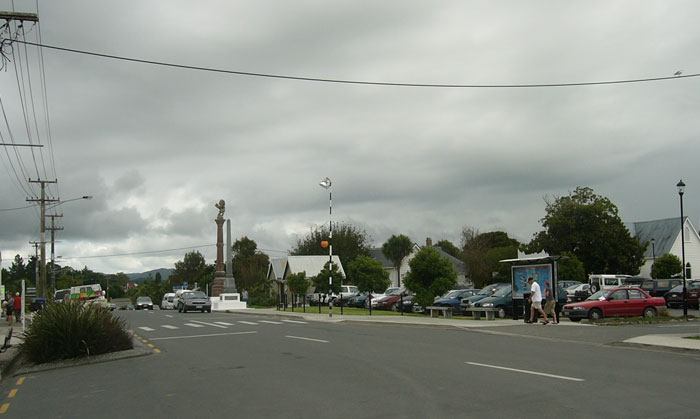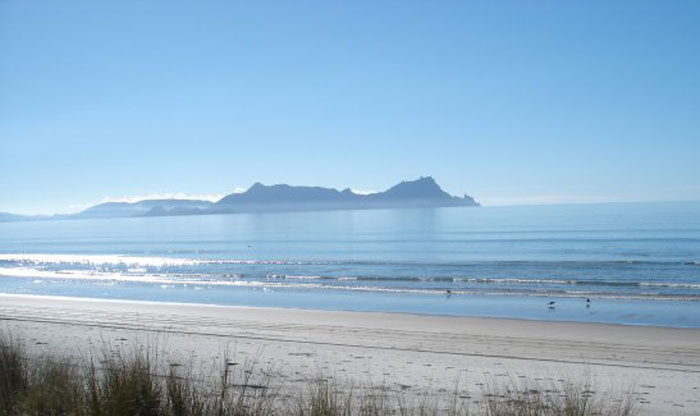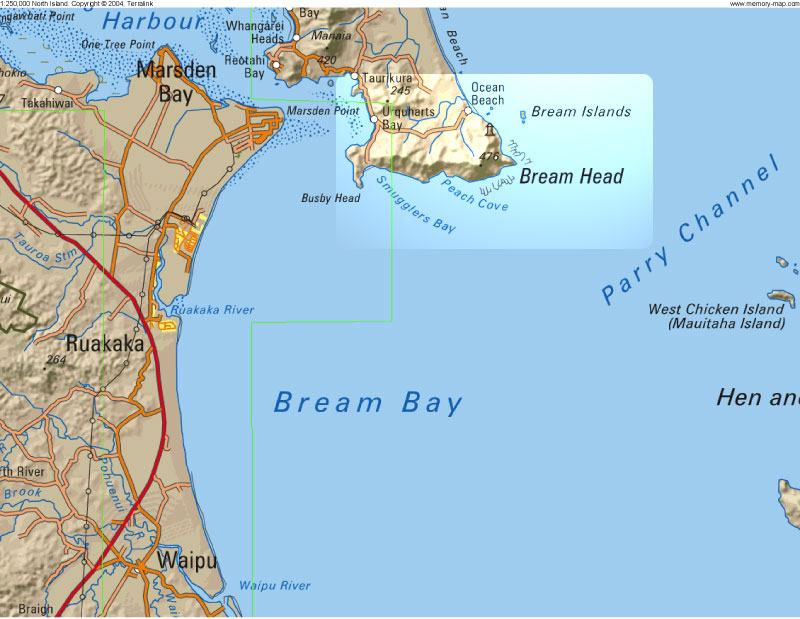| Waipu |
| |
| Waipu was settled as a
Scottish colony in the mid-1800s.
The community has made a conscious effort to retain its cultural identity as
a Scottish community. You've probably seen the phrase, "Céad
míle fáilte" . That's Irish Gaelic. In Scottish Gaelic, "Ceud
mìle fàilte". |
|
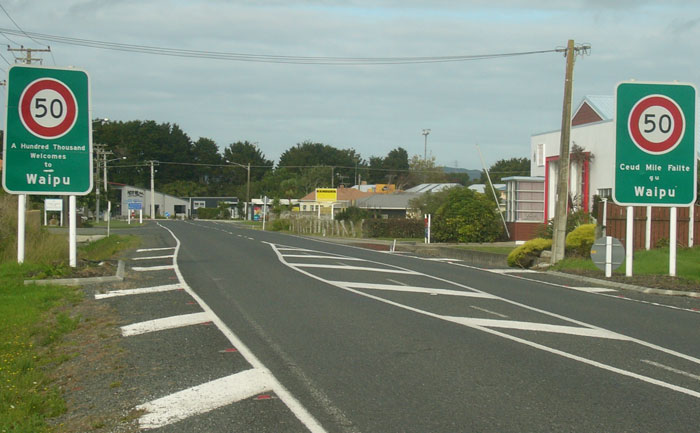 |
| |
| |
|
In the 1820's a community of 900 left the Scottish Highlands
and settled in Picton/Pictou, Nova Scotia. (Highland
Clearances) This community was led by a 'charismatic' Presbyterian
minister, Norman McLeod. The community thrived for a while, but by
the 1840's they became tired of miserable Nova Scotia climate - cold, rainy,
and grey, compounded by crop failures. There were also some issues with the locals' moral
standards. This is the first time I had ever encountered a description
of Canadians as being morally lax. I guess the Anglicans
and Catholics were just too rambunctious for the Calvinist McLeod, who
became known for his public denunciations of wayward parishioners.
"He
was attentive to every aspect of the lives of his followers, particularly in
matters of religion and morals, and did not hesitate to castigate even his
most intimate friends for offences which were often of a trivial nature."
|
|
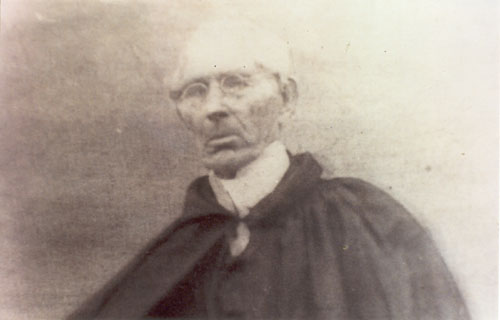 |
|
"never had a day of fun in
his whole life" |
| They built two ships,
the 'Margaret' and the 'Highland Lass' and set out for the South Pacific in
1852. After a brief stay in Adelaide, they finally established Waipu
in 1854,
in the "winterless north". McLeod was 71 at the time.
Almost unimaginable - being 71 and deciding to completely uproot your
community, to get on a boat for four months & to start a new colony on the
other side of the planet. He may not have been all that much fun, but
you gotta give him props for what he accomplished. The fact that over
150 years later, there is still a community on that spot that cherishes its
cultural heritage is testament to his character. |
|
There were storm clouds rolling in the afternoon I spent
in the town. So, I did not use the film camera because all the light
was over towards blues & greys. |
|
|
| |
| My second stay in Waipu was over the Easter
weekend. The town had a community market on Saturday morning, complete
with bagpipes. |
|
(click images for video) |
|
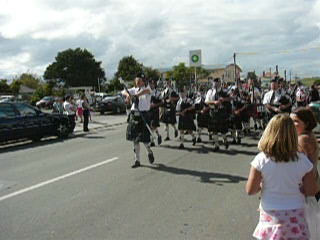 |
| |
| |
|
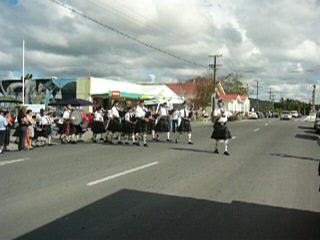 |
| I
think the guy with the big drum was fixin to have a heart attack. |
| The town has a nice centre dedicated to its
Scottish heritage: |
|
 |
| |
| |
| |
| The Waipu
Caledonian Society hosts the year's
first Highland
Games, on 1 January. It has been hosting them since 1871. |
| |
| |
| As a teenager,
New Zealand writer Fiona Kidman lived for two years among the descendants of Norman
McLeod’s followers at Waipū. Haunted by their stories, she later researched
and wrote a novel which explores the lives of women in a moralistic
community. The book of secrets (1987) won the fiction category of
the New Zealand Book Awards in 1988.
(source) |
| |
| |
| |
| |
| It was during
my stay in Waipu that I came to understand Kiwis’ ability to live off the
land. I stayed a little homestay/bed-and-breakfast. The homestay was a
small farm next to a creek that also was very close to the beach. This
creek was a tidal creek, fed from the ocean. When the tide was high, fish
would be in the creek, as the tide went out, the fish should be caught in
the net. By the end of the day, we had about six or seven fish, which went
into the smoker overnight. |
| After
breakfast and setting the nets, we went out to the beach. At the beach, we
set out a long line. A long line is approximately a kilometer of fishing
line, with swivels mounted at three-meter intervals. On each swivel is
another fishing line, perhaps a meter in length, with a hook on the end. At
the end of the long line is an anchor, and a buoy. Preparation of the long
line consisted of unrolling approximately 10 to 15 hooks worth of line. We
collected about 15 toatoa, which is a type of clam, from just underneath the
water on the beach. |
| We cracked
open the shells of the clams, and extracted the meat from inside the clam.
This meat was then used to bait, the hooks. We then take a sea kayak out
into the ocean, dragging the long line behind. The long line is stored on a
reel, so one person stands on the beach as the line plays out. After the
line was perhaps three quarters of a kilometer out into the ocean, we
dropped the anchor, and made sure the buoy was pointed up. |
| We left the
long line out in the ocean for about four or five hours. The result was
four fish. My hosts said that this was about right for a 15 hooks out in
the water. |
| Like the
fish from the net, these fish also went into the smoker. Most of this fish
became fish cakes for lunch, and also for dinner, the following night. |
| There are
also about 20 to 30 ducks and geese living on the farm. |
| Two of these
ducks ended up having their necks wrung that the afternoon, and spent the
night in the smoker. They ended up being the centerpiece of the next
night's dinner. |
| A number of
the vegetables that accompanied the duck and the fish came from the garden
behind the house. |
| After a number of years of
eating food that arrived in the house wrapped in plastic on a Styrofoam
tray, or placed on a table in front of me by a waitress, it was a delightful
and refreshing experience to eat food that had been brought in just that
afternoon. |
| The food
purchased in a supermarket, or in a restaurant is food that has had several
steps of handling, or processing, in its path from its point of origin, to
the table. This is very different from eating some fish that was caught
just the previous afternoon, on a long line that was set out in the ocean.
In addition to the fish, and the ducks we also had some toatoa as part of
some of our dinner. |
| The toatoa
were collected on the beach, but only from areas where they were under 10 cm
of water. The toatoa were collected from the ocean floor, and immediately
went into a bucket of sea water. My hosts comment was "never eat shellfish
that's been up out of the air. It starts to rot immediately." These toatoa
stayed in this bucket of salt water, until they were prepared for dinner. |
|
The fish that were caught on long line
were also stored in a bucket of seawater. They stayed in this bucket of
seawater, until we got back to the house, at which point they were cleaned
immediately. After the cleaning, they were packed in salt for a while and
stored in the refrigerator.
After several hours
in the refrigerator, packed in salt, the fish went into the smoker. |
| |
| |
| |
| location map.
Note the street names - Nova Scotia Drive, The Braigh, Connell Road, Argyle
Street. |
|
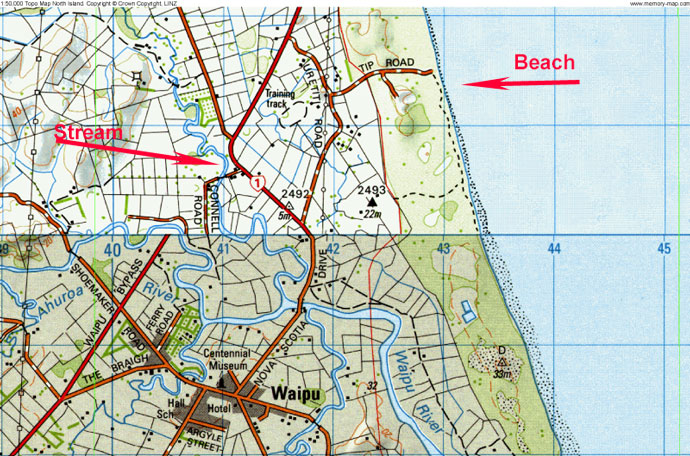 |
|
(image source) |
| |
| There's a very nice beach near Waipu,
Uretiti Beach. |
|
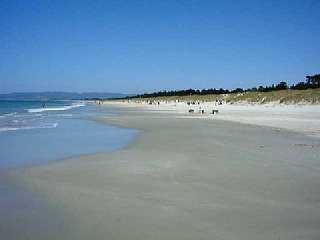 |
| Bream Head |
|
|
|
|
| |
| This artist
lives near Bream Bay: |
|
 |
| ABSOLUTELY
MUST look at some of his work. He does an excellent job of
capturing the beaches. |
| On his site: |
Bream Bay Dunes |
Winding Path |
| |
|
|
| |
Evening Freedom - Uretiti |
Bream Bay Light |
| |
|
|
| |
Going Someplace |
Bream Bay Evening |
| |
|
|
| |
Bream Bay Summer |
The Narrow Path |
| |
|
|
| |
Waipu Cove Sunset |
Bream Bay Panorama |
| |
|
|
| |
Waipu Monuments |
|
| |
|
|
| Some commercial site: |
This |
This |
| |
| |
| I should have
done this, but didn't. Very nice pictures of the beach. |
|
 |
| |
| |
| Bream Bay has a
longboard team, the The Bream Bay Sliders: |
|
 |
|
|
| Campsite information:
(Click on 'Uretiti Beach' on the list.) |
 |
| |
| |







